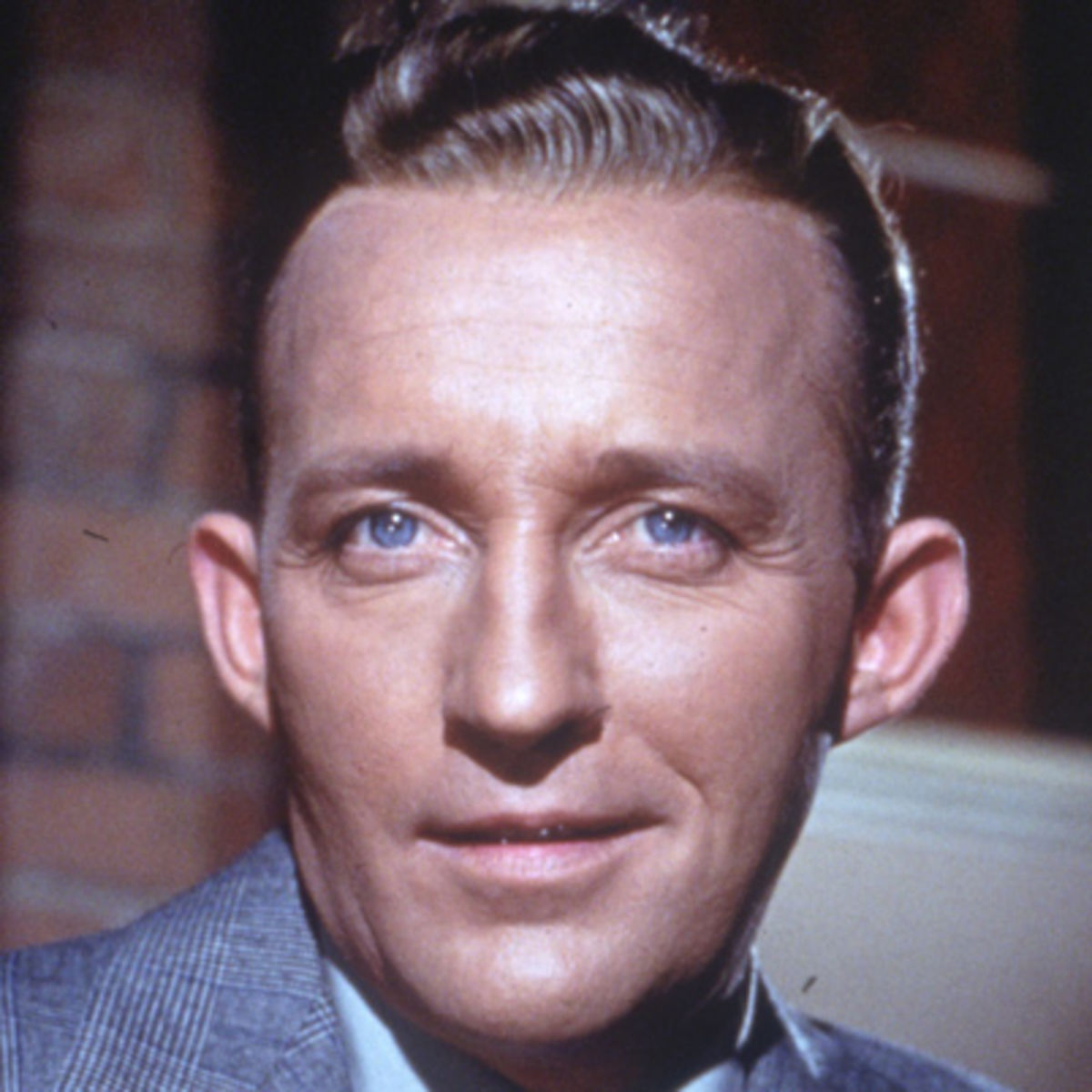It is more than reasonable to rank singer/actor Harry Lillis “Bing” Crosby as a pivotal figure in the development of all modern popular entertainment. Out of many entertainers populating the crowded airwaves of early radio, this richly expressive baritone from Tacoma, Washington was THE voice most welcome on millions of radios during the Depression. To a public accustomed to Jolson’s brassy belting or the prevalent “Irish Tenor” style of delivery, Crosby was something entirely different: casual, lightly jazzy, modulated to the intimacy of the microphone and not to the second gallery of the live theatre. His radio prominence immediately translated into mammoth recording success, and film stardom was not far behind. By WWII, Bing Crosby was the most famous, revered person on earth, the first multi-media superstar.
His early recording successes were compounded by countless film appearances that established his identity forever as The Crooner: “I Surrender, Dear,” “Prisoner of Love,” “Please,” “Out of Nowhere,” “Wrap Your Troubles In Dreams,” “Just One More Chance, “June in January,” “Love Is Just Around the Corner,” “Love in Bloom,” “Love Thy Neighbor,” “Easy To Remember,” “Pennies From Heaven,” “I’m An Old Cowhand,” “Small Fry,” “Pocketful of Dreams.” Later, Crosby would surpass even this level of success by starring with Bob Hope in the legendary Road pictures, winning an Academy Award singing “Too-Ra-Loo-Ra” and “Swinging on a Star” in GOING MY WAY and introducing the ultimate American Christmas carol, “White Christmas.” More songs forever associated with him: “Moonlight Becomes You,” “Accent-tchu-Ate The Positive,” “But Beautiful,” “In the Cool, Cool, Cool of the Evening,” “Count Your Blessings,” “True Love.” “The Second Time Around.”
The enigmatic, seemingly carefree and modest personality subtly disguised what was truly a global presence. In a golden age crowded shoulder-to-shoulder with extraordinary talent, Bing Crosby was arguably the most important entertainment figure of the first half of the twentieth century.
If you would like to engage Fred Miller for one of his Lectures-in-Song, please contact him directly at any time. For a full listing of all Lectures, click here.
Fred Miller’s Lectures-In-Song comprise a series of solo programs, each an historical, anecdotal and musical profile of some great personality or important aspect of American Popular Song. These Lectures are delivered by singer/pianist/narrator Miller at the piano, and each reflects his lifetime passion and appreciation for great music. He studied classical piano in his hometown of Albuquerque from ages 7-15 but early on gave up any notion of music as a profession. At that time, Fred assumed a musical career was either one devoted to the rigid discipline of classical music or being a freewheeling rock star, and he accurately decided he had no aptitude for either. However, at age 22, upon hearing Ella Fitzgerald sing Cole Porter, he found his calling and life’s mission.
Through the Seventies and Eighties, Miller studied and absorbed in minute detail the life and times and songs of nearly all the great American composers and lyricists who thrived during Broadway & Hollywood’s Golden Age between the two World Wars. In 1987, he founded Silver Dollar Productions in order to produce operettas, dramas, musicals and small cabarets. Silver Dollar Productions required ensemble casts, props, costumes and, most significantly, the challenges of publicity and selling tickets, and for a dozen busy years, the company presented an unbroken string of varied and highly lauded performances.
In 1999, Miller was simultaneously underwritten by both his local Hunterdon County Library and the Art Alliance of Philadelphia to present a series of six solo Lectures-In-Song, each devoted to one of the premiere Broadway/Hollywood songwriters: George Gershwin, Cole Porter, Irving Berlin, Richard Rodgers, Jerome Kern, and Harold Arlen.
In presenting history, biography and psychology while sitting at a piano singing the superlative songs of his heroes, Miller has found a single performing medium that utilizes most of his intellectual and musical passions.The list of Lectures-In-Song that began with six in 1999 is now more than seventy(and growing!), a joyful tribute to the boundlessly rich field of American Popular Song.

